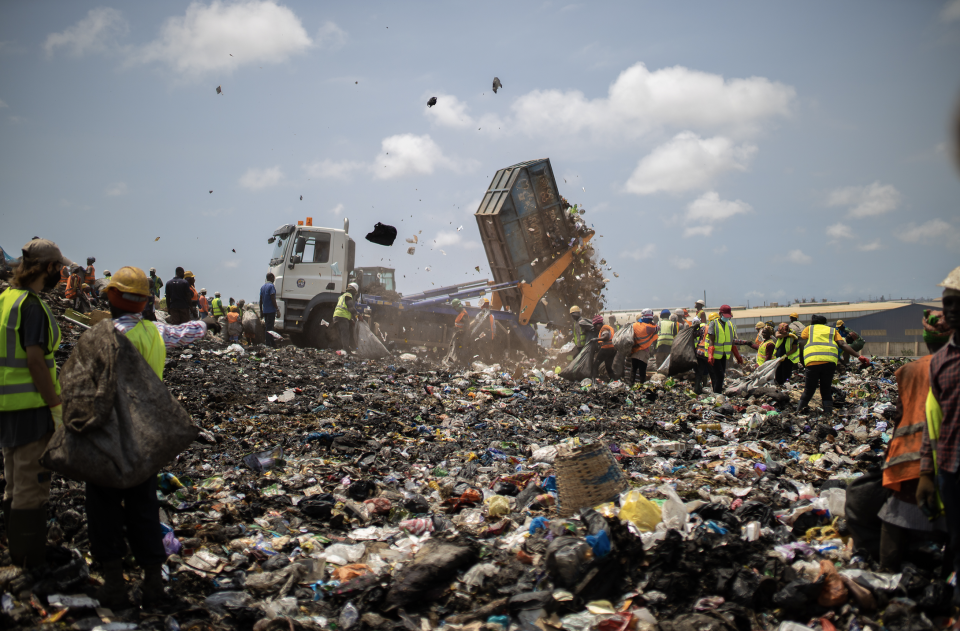EXCLUSIVE: Vestiaire Collective’s Customers Move to Better Brands After Fast Fashion Ban

PARIS – Vestiaire Collective’s move to take fast fashion out of its brand mix has resulted in a boost in the positive environmental impact from its resale model, according to its latest impact report.
Last November the company moved to ban fast fashion brands, including Asos, Shein, Burton, Fashion Nova, Pretty Little Thing, Missguided, Topman, Topshop and Tezenis, among others.
More from WWD
According the the impact report, 80 percent of respondents said that they are investing in higher-quality pieces as a result and 58 percent said they are buying fewer fast fashion items as an upscaling knock-on effect of purchasing better items.
“It’s a positive sign to say, ‘You know what, you can live without fast fashion, and move on to better made and more sustainable brands,’” Vestiaire Collective cofounder and president Fanny Moizant told WWD.
The platform surveyed 3,500 customers from its markets, including France, Germany, Italy, Spain, U.K., U.S., Australia and Hong Kong.
Eighty-five percent of respondents also said they are willing to buy fewer, but high-quality, items going forward, putting the “less is more” ethos into practice. Eighty-two percent said that because of their purchase on Vestiaire Collective, they did not buy a new item, a jump from just 70 percent last year.
Only 16 percent of sellers said they use their proceeds to buy new items; instead, the majority are reinvesting in other high-end resale items.
The survey is good news for brands that are looking to build long-term care into their business models, with 53 percent reporting they repair items to prolong their life and 60 percent reporting they take better care of their items knowing they can resell them later.
After initially removing 20 brands from sale, the company will roll out two additional phases before 2025. The reaction from users has been positive, with 70 percent of respondents upgrading their purchases as a result. They are continuing to research this number to assess if the additional 30 percent will return.
“The challenge now is to define how we enter phase two and phase three, to work with experts to define a methodology and to be able to define ‘fast fashion.’ There is no clear definition and so defining the criteria and making sure we apply them to the entire catalog of Vestiaire’s more than 10,000 brands,” said Moizant.
Criteria they are considering are garment quality, the label’s volume of production, marketing that promoted over-consumption, as well as social impact and what regulations they produce under. The company expects to be able to reveal the second round of brands by the end of 2023.
The company will continue its educational efforts to raise awareness of the environmental effects of the disposal of fast fashion, in conjunction with The Or Foundation. “Seeing the damage it has caused in the Global South really awakened some of our customers,” said Moizant of the campaign. “They understood a bit better the damage of over-consumption on the population of Ghana, for example. It drove a lot of questions and discussions. It was well received.”

The awareness seems to be working. Fifty-two percent of respondents said they are using Vestiaire Collective not just in pursuit of labels, but to reduce their environmental impact, and 56 percent said that knowing the lower environmental impact of reused items encourages their purchases.
Moizant noted that previously “affordability” was the driving reason customers went to Vestiaire Collective, with “sustainability” dead last. This year that changed — “sustainability” moved up to the second spot.
Moizant said this negates any arguments that resale is just another kind of overconsumption.
“It’s how do we basically slow down an industry that is over-consuming? We have no power on production, but on consumption, we can definitely try to help people slow the pace by investing in quality and making it last longer,” she said.
They are also working on tracking how many times an item re-enters the Vestiaire Collective marketplace, to get a better understanding of how truly circular the platform is. While it’s difficult to track a single item, anecdotal evidence from the company’s authentication process shows that items are being resold multiple times. “We do see, at the end of the day, the more qualitative item you buy, the better the lifespan will be.”
They partnered with Chloé this year to launch a digital ID with product and material information, as well as resale options. It’s a sign of things to come for Vestiaire, which is working on similar partnerships in the future.
The company is also collaborating quietly with other brands, providing durability data obtained from products sold through Vestiaire’s authentication service. “As we have the product in hand, we are able to check the quality and tell [a brand], ‘On this bag or this dress, we often see the seams being a bit damaged here,’ and so on. Brands are eager to receive that qualitative feedback that they were never able to have before because it is post-consumer purchase,” said Moizant.
“We are closing a loop that will help in the longer term produce even more durable items. It has been created very organically, because our common DNA is in standing for craftsmanship and quality and durability.”
The company is also supporting the Extended Producer Responsibility for textiles at the EU legislative level and advocating for fair distribution on how its fees are applied at end of life. “If the product ends up in Ghana, the money shouldn’t stay in the Global North. There’s a fairness to be defined at the policy level,” she said.
Last year Vestiaire crossed the net positive threshold — meaning that emissions avoided by purchasing second hand from the site exceed the ones the company generates — and that rate has increased nearly three times this year as the company has grown.
Moizant said they are not slowing down, and will accelerate their resale as a service division. She expects to unveil several big new brand partnerships in the second half of the year.
“That’s what we call systemic change,” she added.
Best of WWD

